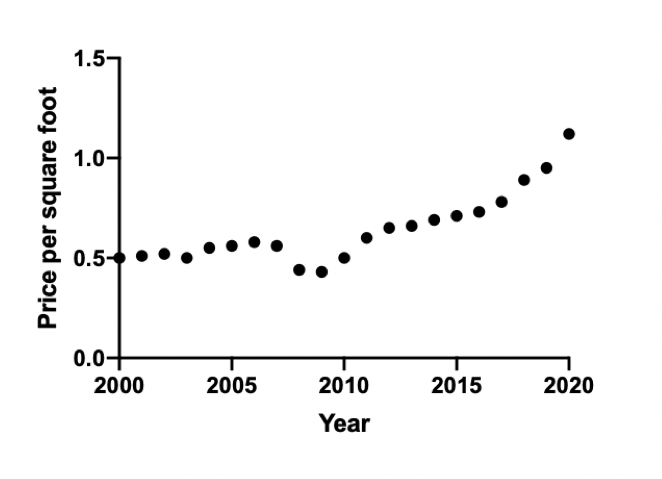MCAT Sociology Practice Questions
/Prepare for MCAT Sociology questions with practice problems
(Note: This resource also appears in our MCAT Ultimate Guide.)
----
Introduction
MCAT Sociology Practice Passage #1
MCAT Sociology Practice Passage #2
MCAT Sociology Practice Passage #3
MCAT Sociology Practice Questions (Standalone)
----
Introduction
Sociology makes up a large component of your MCAT psychology/sociology section score. The MCAT is a long exam, and the psych/soc section is the final section of the exam. As a result, many students are burned out and tired when they make it to this section.
In addition, many premeds haven’t yet taken a sociology class before studying for the MCAT. As a result, most students will need to both learn the content and how to apply that content to practice problems for the MCAT. A solid MCAT study schedule will help you achieve both of those goals.
On the psychology/sociology section of the exam (and the other two science sections of the exam as well), the test writers generally take a scientific article, include a few figures, and ask you questions that require you to combine information from the passage with your outside knowledge.
(Suggested Reading: Everything you need to know about MCAT Psychology and Sociology: Everything You Need to Know)
So, how do you improve your performance on the MCAT psych/soc section? Practice! Here, we’ll test your sociology knowledge using MCAT-style passages. Use the following three sociology passages and five standalone questions to test your knowledge. Each explanation for the passage-based questions will have suggestions for what you should review if you miss a question. Good luck!
----
MCAT Sociology Practice Passage #1
Traditionally, individuals with middle to high socioeconomic status (SES) have lived in suburban areas, which tend to have well-funded schooling systems and reduced crime. In recent years, however, major urban areas have seen an increase in the movement of individuals with middle to high SES move back to newly renovated city center neighborhoods. As a result, individuals with low SES who previously lived in those neighborhoods have been displaced.
In a new study, researchers aimed to track house prices in a city center area of Houston, TX over a period of twenty years. The results from the study are shown in Figure 1.
Figure 1. Price per square foot versus time.
The increase in housing costs has forced low SES individuals to seek housing in more industrial areas of town. As a result, these individuals face increased exposure to polluted air and water, thereby increasing the incidence and prevalence of certain health conditions, such as asthma or cancer. In addition, many of these low SES individuals experience an exacerbation of their environment-related health conditions due to a lack of healthcare access.
Note: The information in this passage was created for the sole purpose of presenting an MCAT-style passage and should not be construed to be factually true.
1. The process described in paragraph 1 is best known as:
A) Renovation
B) Gentrification
C) Rejuvenation
D) Intragenerational mobility
2. The exacerbation of health conditions due to a lack of access to healthcare is known as:
A) Absolute poverty
B) Second sickness
C) Environmental justice
D) Medical mistrust
3. Researchers conduct a new study within a US city and find that it is more difficult to find healthy and affordable food options in low SES neighborhoods versus high SES neighborhoods. Which of the following terms best characterizes this observation?
A) Food desert
B) Global inequalities
C) Intersectionality
D) Urban decay
4. Which of the following is LEAST likely to contribute to social reproduction?
A) Cultural capital
B) Social capital
C) Prestige
D) Emigration
Answer key for practice passage #1
1. Answer choice B is correct. Gentrification describes the process of renovating city center neighborhoods, causing middle to high SES individuals to move in while displacing low SES individuals (choice B is correct; choices A, C, and D are incorrect).
Review gentrification and intra- versus intergenerational mobility.
2. Answer choice B is correct. Second sickness describes the worsening of health conditions due to a socioeconomic gradient in healthcare access (choice B is correct). Absolute poverty occurs when an individual does not have enough resources to sustain basic human needs, such as food, water, and shelter (choice A is incorrect). Environmental justice calls for the equal treatment of all people and the right to live in places without environmental or health hazards (choice C is incorrect). Medical mistrust describes the lack of trust of medical providers by an individual or group (choice D is incorrect).
3. Answer choice A is correct. A food desert is a place where it is difficult to find healthy and affordable food options, and this commonly occurs in low-income neighborhoods (choice A is correct). Global inequalities describe different countries with different access to resources, but the question stem is talking only about a single US city (choice B is incorrect). Intersectionality describes the interconnected nature of oppressed groups, which leads to overlapping and compounding disadvantages for individuals (choice C is incorrect). Urban decay describes portions of a city that undergo deterioration over time (choice D is incorrect).
Review food desert, global inequalities, intersectionality, and urban decay.
4. Answer choice D is correct. Cultural capital, social capital, and prestige all contribute to social reproduction, which describes the idea that social inequalities are passed between generations (choices A, B, and C are incorrect). Emigration is the least likely to produce social inequalities between generations (i.e. a low SES parent and a low SES child) as emigrants usually seek more opportunities in a new location (choice D is correct).
Gain instant access to the most digestible and comprehensive MCAT content resources available. 60+ guides covering every content area. Subscribe today to lock in the current investments, which will be increasing in the future for new subscribers.



